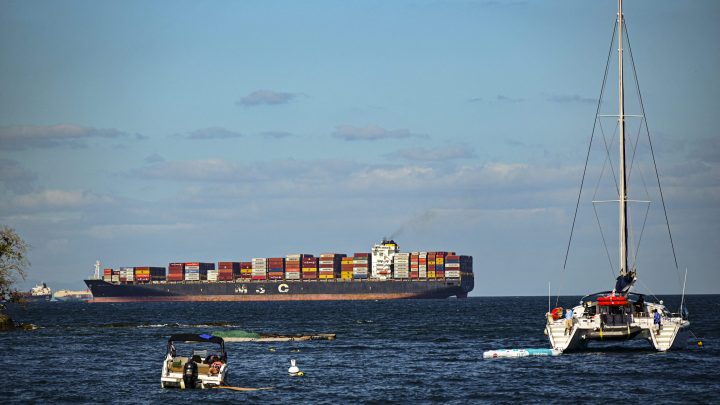
Despite problems in the Red Sea and Panama Canal, shipping costs are falling
Despite problems in the Red Sea and Panama Canal, shipping costs are falling

Supply chains have been making news again because of problems in two of the world’s most important shipping lanes: the Red Sea, where Yemen’s Houthi rebels have attacked shipping, and the Panama Canal, where low water levels are limiting the number of vessels that pass through.
Those disruptions have caused big delays, and shipping container rates have spiked. But even though the problems are ongoing, supply chains have been settling down over the last few weeks.
The cost of container freight rose through January, according to supply chain advisory firm Drewry. But in February, container shipping costs have ticked down, said Simon Heaney, Drewry’s senior manager of container research.
“You see that being driven by decreases in the Asia-to-Europe trade lane,” Heaney said.
In other words, the trade lane that’s most affected by the Red Sea disruption.
Heaney said Lunar New Year celebrations were partly responsible for the slide in shipping costs. Factories in Asia tend to shut down around that time, but even as they kick back into gear, costs could keep falling, Heaney said. In large part because shipping companies are avoiding the Red Sea.
“There’s an understanding that yes, there will be additional time in terms of transporting cargo from Asia to Europe, but the scheduling is about to adjust to cater for those additional delays,” he said.
Since shipping companies have to go the long way around Africa to avoid the Red Sea, they’ve added vessels to those routes to reduce delays, said Judah Levine at logistics company Freightos.
“So when you have those smoother operations, you’re not having missed departures and loaded containers building up in the ports and then competing to get on the space of the next vessel,” Levine said.
They added that deploying those new ships isn’t exactly cheap. Neither is the extra fuel consumed traveling around Africa. But the added capacity takes a lot of risk and uncertainty out of shipping, which can take the edge off shipping prices.
“Compared to how high we’ve seen them get in the last few weeks, we’re expecting them to come down,” Levine said.
Meanwhile, the links in the supply chain that don’t involve ocean freight are doing just fine, said Kadee Russ, an economics professor at the University of California, Davis.
“Ports have plenty of capacity and are able to more or less manage this rerouting of ships, to a large degree,” she said.
That’s why the recent shipping disruptions, she said, are nowhere near as bad as what happened early in the pandemic.
There’s a lot happening in the world. Through it all, Marketplace is here for you.
You rely on Marketplace to break down the world’s events and tell you how it affects you in a fact-based, approachable way. We rely on your financial support to keep making that possible.
Your donation today powers the independent journalism that you rely on. For just $5/month, you can help sustain Marketplace so we can keep reporting on the things that matter to you.











